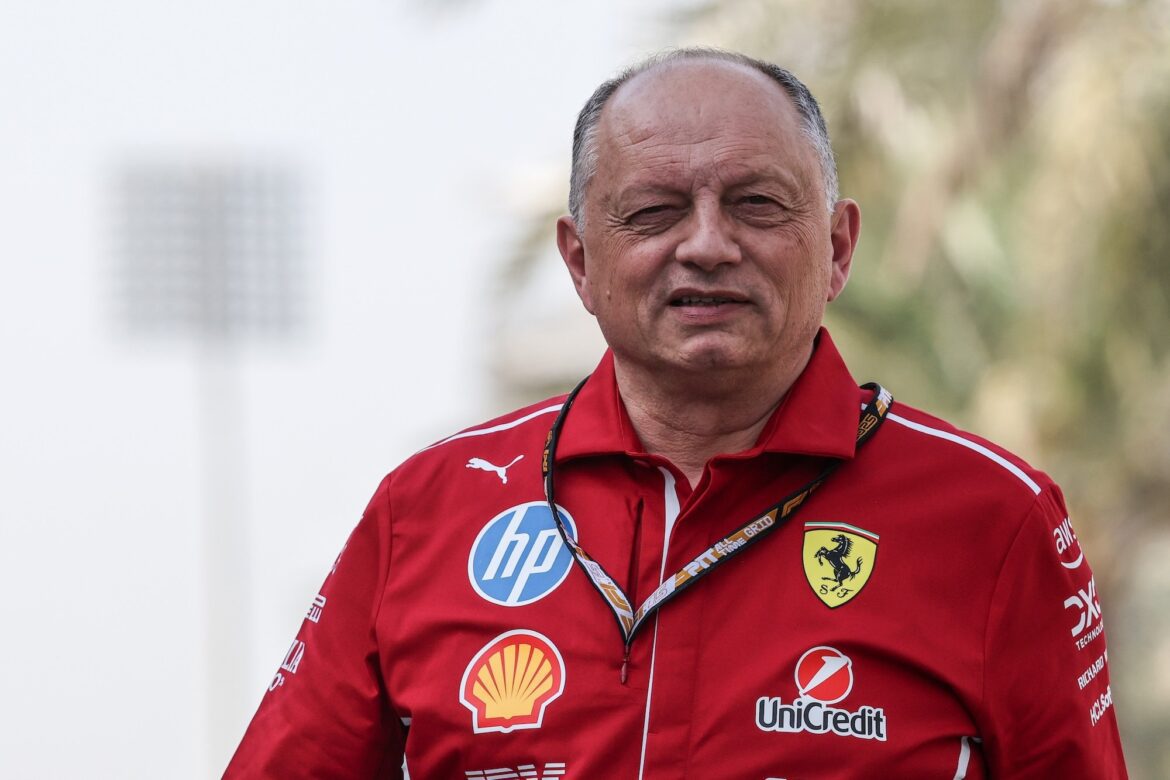Ferrari’s Frédéric Vasseur Backs Lewis Hamilton After Azerbaijan Grand Prix
Frédéric Vasseur, the team principal of Ferrari, recently came to the defense of Lewis Hamilton following the Azerbaijan Grand Prix in Formula 1. He emphasized Hamilton’s performance during the race and drew a comparison with Lando Norris from McLaren to illustrate Hamilton’s gradual adaptation to his new role with the Italian team. Vasseur pointed out that Hamilton started the race from the twelfth position and finished closely behind Norris, who had started seventh and maintained his position throughout the race. This, according to Vasseur, indicates that Hamilton is slowly but surely finding his rhythm with Ferrari.
Hamilton’s Progress in Ferrari Colors
Vasseur expressed optimism regarding Hamilton’s progress, stating, "Lewis started from twelfth and finished right behind Norris." The reference to Norris, who is currently second in the championship standings, serves to highlight Hamilton’s ongoing development within the Ferrari setup. It suggests that the British driver is beginning to adjust to the car’s dynamics and the competitive environment, which is crucial for any driver transitioning to a new team.
The Ferrari team principal further commented on the positive aspects of their weekend preparation, saying, “In the last few races, our pace has been good. We’re getting there.” He acknowledged that the team’s preparation leading into the race weekend was effective, which is an encouraging sign for both the team and Hamilton. “If you look at this weekend, I honestly think the preparation we aimed for worked well, and the rest was solid. However, it’s always better to start from P10 and move forward,” he added.
The DRS Challenge
While Vasseur expressed support for Hamilton, Norris made it clear over the team radio that he believed he had more potential in the McLaren MCL39 but was unable to fully exploit it due to the ‘DRS train’ phenomenon. Norris found himself stuck behind Yuki Tsunoda and Liam Lawson, which limited his ability to advance in the race. This situation highlights the complexities of racing strategies and the impact of DRS zones, which can sometimes hinder drivers’ performances rather than enhance them.
This exchange raises important questions about race dynamics and the strategy employed by teams during the races. The ‘DRS train’ can create a situation where faster cars are unable to overtake slower ones, leading to frustration among drivers who feel they are capable of more but are physically unable to make progress on the track.
The Quest for Podium Finishes
Despite the challenges faced, Vasseur remains hopeful that Hamilton can secure his first podium with Ferrari this season. He firmly believes that the team is capable of winning a race this year, indicating an optimistic outlook for the remaining races on the calendar. However, he also acknowledged the recent struggles the team has experienced, including inconsistencies in performance, difficulties in tire warm-up, and reliability issues that have plagued their season thus far.
The expectation for better results is palpable among the team hierarchy, and Vasseur’s comments reflect a desire to see Hamilton capitalize on his experience and talent. The combination of a seasoned driver like Hamilton and a storied team like Ferrari creates a narrative that fans and analysts alike are keen to follow.
Pressures from the Italian Media
However, not all observers share Vasseur’s optimistic perspective. Some members of the Italian press, notably journalist Leo Turrini, have criticized the team’s management and emphasized that only victories can alleviate the scrutiny surrounding Vasseur’s leadership. This highlights the intense pressure that Ferrari faces, particularly when it comes to meeting the expectations of their passionate fanbase and the media.
The scrutiny is a part of the sport, especially for a historic team like Ferrari, which has a rich legacy in Formula 1. The expectation to perform at the highest level is always present, and the management is under constant pressure to deliver results that align with the team’s storied history.
Internal Team Dynamics
The weekend in Baku also revealed some internal friction within the Ferrari team. During the race, Hamilton did not relinquish his position to Charles Leclerc after receiving assistance from his teammate. This decision led to immediate dissatisfaction from Leclerc, which indicates that the dynamics between the two drivers may need some attention moving forward.
Such situations can create tension within a team, especially when teammates are vying for position. The balance between teamwork and individual ambition is delicate, and it is crucial for the team principal to manage these relationships and ensure that the focus remains on achieving the best possible results for Ferrari as a whole.
Looking Ahead
As Ferrari moves forward in the season, the focus will be on how they can improve their performance and consistency. With Hamilton adapting to his new environment, the potential for success remains. Yet, the challenges are evident, and the team will need to address them head-on to achieve their goals.
The importance of teamwork, effective communication, and strategic planning will be paramount as they navigate the remainder of the season. Vasseur’s leadership will be tested as he seeks to guide the team through the ups and downs that are inherent in motorsport.
Conclusion
In summary, Frédéric Vasseur’s defense of Lewis Hamilton following the Azerbaijan Grand Prix underscores the complexities of Formula 1 racing and the challenges facing the Ferrari team. While there are signs of progress, the road ahead is filled with hurdles that require careful navigation. The dynamics between drivers, the pressures from the media, and the expectations of fans all play a significant role in shaping the team’s journey in the competitive world of Formula 1.
